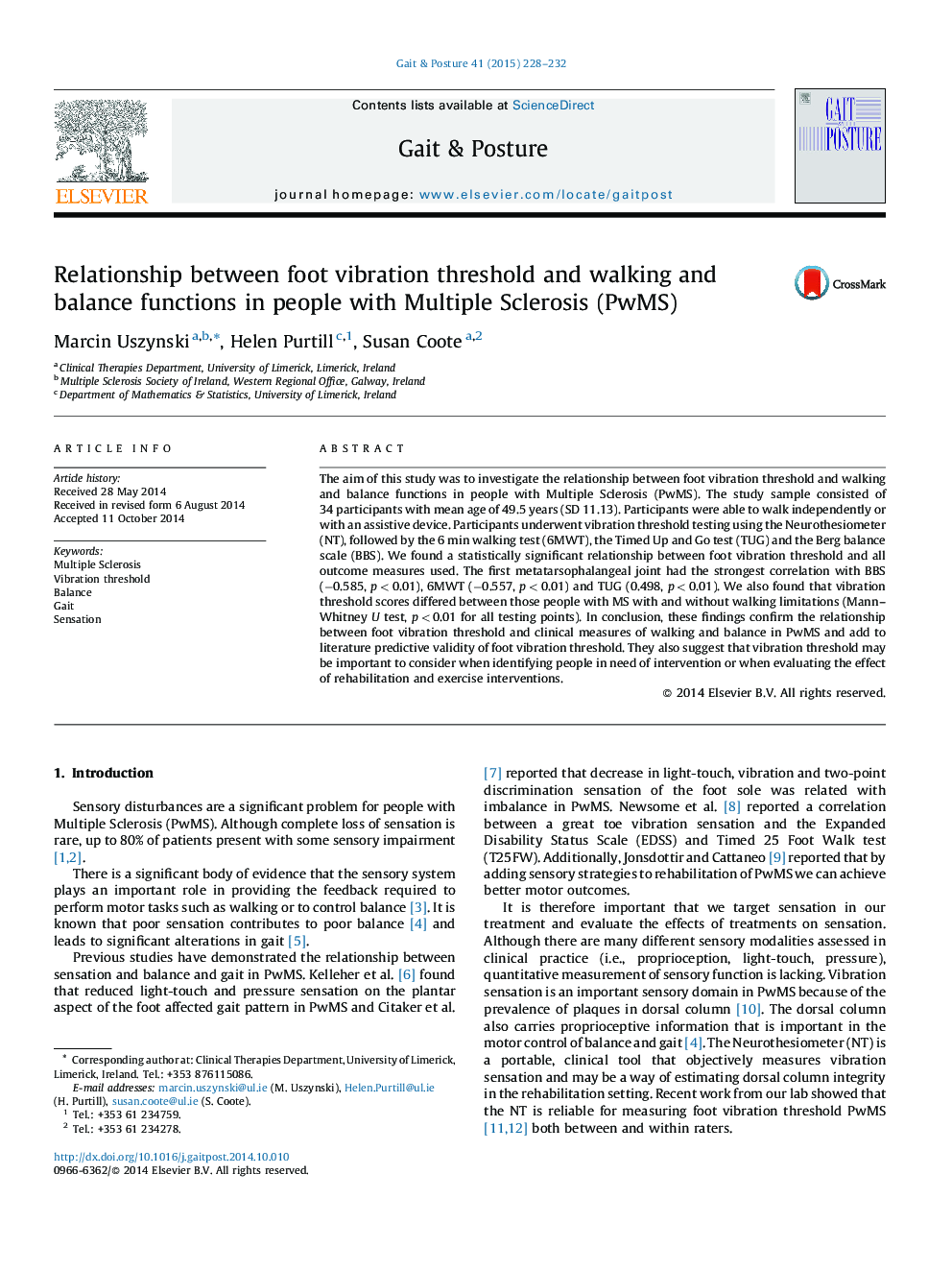| Article ID | Journal | Published Year | Pages | File Type |
|---|---|---|---|---|
| 6205717 | Gait & Posture | 2015 | 5 Pages |
â¢We found a significant relationship between foot vibration threshold and function in ambulatory people with Multiple Sclerosis.â¢The first metatarsophalangeal joint on the foot is the most strongly correlated point with balance and walking.â¢The Neurothesiometer can distinguish between those people with Multiple Sclerosis with and without walking limitations.
The aim of this study was to investigate the relationship between foot vibration threshold and walking and balance functions in people with Multiple Sclerosis (PwMS). The study sample consisted of 34 participants with mean age of 49.5 years (SD 11.13). Participants were able to walk independently or with an assistive device. Participants underwent vibration threshold testing using the Neurothesiometer (NT), followed by the 6 min walking test (6MWT), the Timed Up and Go test (TUG) and the Berg balance scale (BBS). We found a statistically significant relationship between foot vibration threshold and all outcome measures used. The first metatarsophalangeal joint had the strongest correlation with BBS (â0.585, p < 0.01), 6MWT (â0.557, p < 0.01) and TUG (0.498, p < 0.01). We also found that vibration threshold scores differed between those people with MS with and without walking limitations (Mann-Whitney U test, p < 0.01 for all testing points). In conclusion, these findings confirm the relationship between foot vibration threshold and clinical measures of walking and balance in PwMS and add to literature predictive validity of foot vibration threshold. They also suggest that vibration threshold may be important to consider when identifying people in need of intervention or when evaluating the effect of rehabilitation and exercise interventions.
